So you’ve decided to get the right camera and you know someone who knows someone who has a Canon. You, my friend, will make a great choice! The Japanese company has been at the forefront of the best in cameras since its inception, and its EOS system is more than 30 years old. It also happens to hold the number one market share today, which has to count for something.
Of course, with so many DSLRs on offer (and a few mirrorless cameras – one for another list), you’re sure to find something for any budget and skill level. In fact, not only can Canon offer you something that makes a great first camera, but it can also give you a boost on your journey or even give you the tools to work like a top pro – glamorous lifestyle and Ferrari not included.
After all, as any good photographer will tell you, a camera is only as good as its lens system, and whether it’s a wide range of affordable EF lenses or world-class L optics, you’ll never find yourself wanting.
Here are our picks for the best Canon DSLRs for any budget or skill level.
The best Canon DSLR cameras
This budget entry-level DSLR starts with a 24.1MP APS-C sensor, a fixed 3-inch non-touch LCD, and an optical viewfinder. There are nine AF points to help you get sharp photos, and the built-in flash is great for shooting darker scenes. Intelligent automatic modes mean the camera will help you learn, while manual mode lets you take control when you’re ready. It features 1080p video, Scene Intelligent Auto and a handy feature guide that lets you know what each setting does. It may not be the choice of professionals, but for the price with the 18-55mm lens it’s a great start.
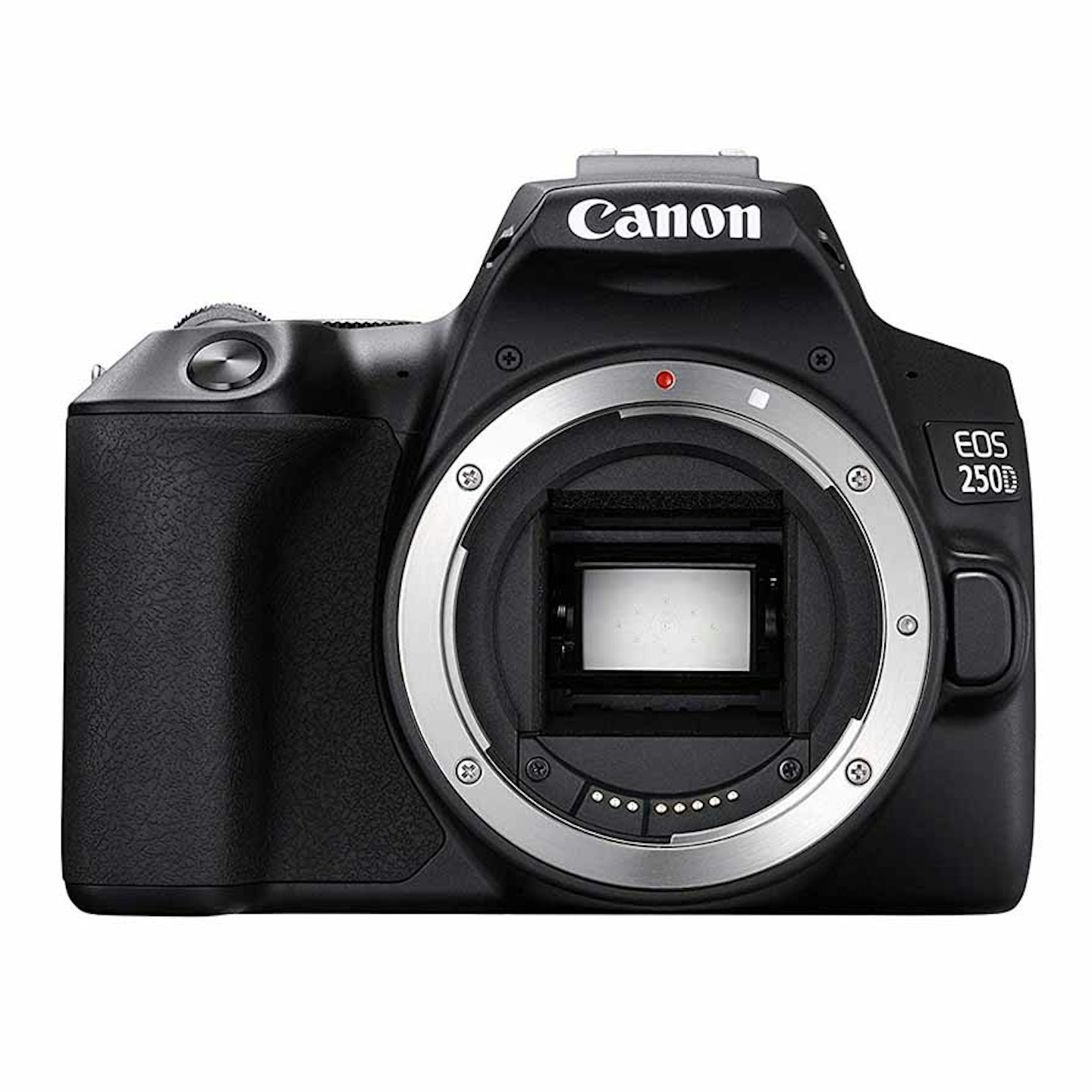
Taking a step up the food chain, this DSLR offers several advantages over the 2000D. It still has a 24.1MP APS-C sensor, though it has a Digic 8 processor, 4K video and a 5fps continuous shooting speed. The rear 3-inch 1040K-dot LCD tilts forward and has touch controls – perfect for blogging or selfies. The autofocus system is still nine points, but using that screen gives you 49 points of Dual Pixel AF. Finally, the same intelligent auto modes appear, as well as a guided user interface, meaning this is perfect for beginners or those looking for a tilting touchscreen and better video features. Bluetooth lets you connect to the Canon app on your phone for image sharing or remote control.
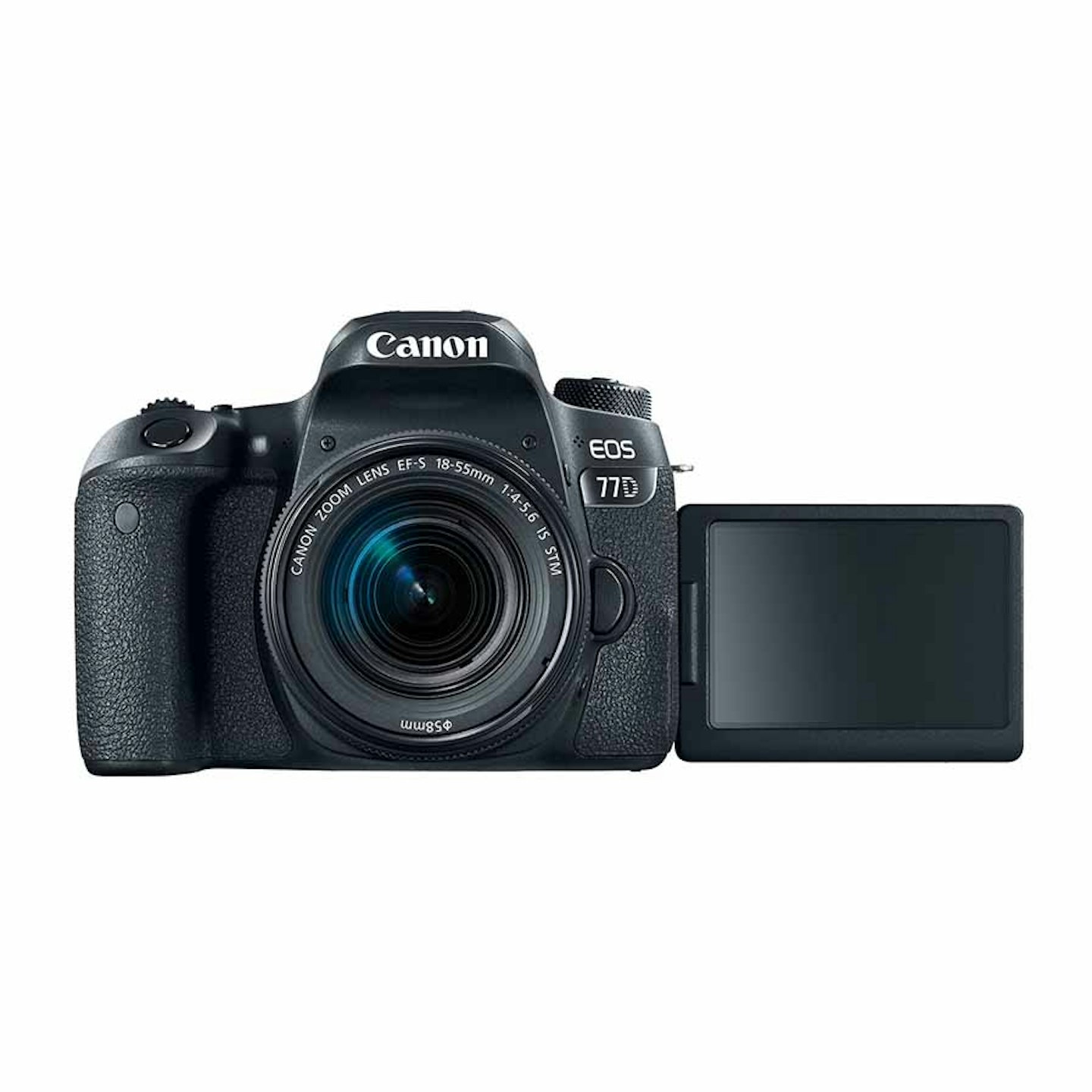
So you’re no longer a beginner and want something a little meatier? Welcome to 77D! Aimed at enthusiasts, you get a slightly chunkier body with a professional-looking top panel LCD display that displays your shooting settings. It also has a 24.2MP APS-C sensor and a 3-inch tilting rear touchscreen. Like the 250D, it has a touch control for perfect framing from the front. There’s video, capable of 1080p at 60fps, and Bluetooth lets you connect to the Canon app on your phone for image sharing or remote control. It also had 45 autofocus points when using the optical viewfinder or 49 with Dual Pixel AF when using the rear Live View display. There’s optical stabilization for movies, with 5-axis digital image stabilization for smoother shots. You’ll also get Scene Intelligent Auto, allowing the camera to get the best settings for your photo, a built-in flash and a continuous shooting speed of 6 frames per second.

The last APS-C offering on this list before we move on to the big boys. The 7D MkII is getting on in years, but it still has the guts to produce excellent images, especially if you’re looking for modestly priced sports or wild shooting. It’s also the first offering to feature weather protection, built-in GPS and a fast 10 frames per second shooting speed. It also offers a more advanced 65-point AF system, allowing you to capture those fast-paced action scenes. It has two card slots, with room for one SD and one CF compact flash card, and also boasts a Dual Pixel AF system, although the rear screen is fixed and doesn’t allow touch. The 20.2MP APS-C sensor, which boasts a 1.6x crop, works with Dual Digic 6 processors to deliver Full HD 1080p at 60fps and an ISO range of 100-16,000.
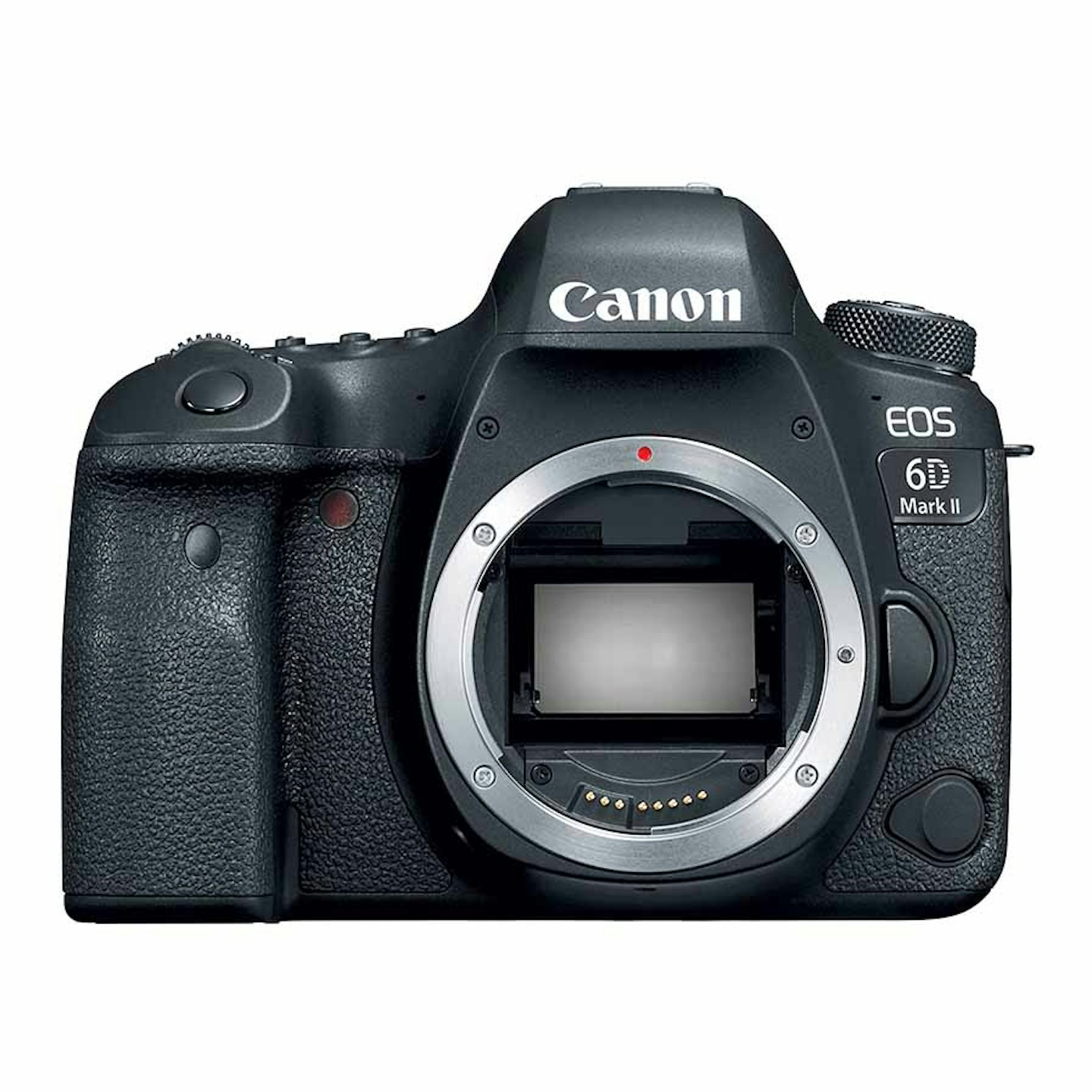
We’re nearing the end of the list, which means it’s time to jump into the world and look at full-frame sensors. The 6D MkII, known as Canon’s full-frame entry-level model, features a 26.2MP 35mm CMOS sensor, a 3in 1040k-dot Vari-Angle LCD, which can be tilted forward and supports touch control, and 45 cross-type focus points using an optical viewfinder or 63 using the rear point selection screen. You’ll find a wider ISO range, spanning a whopping 100-40,000 – perfect for shooting in low light. Built-in GPS will mark your location in shots, and Bluetooth means you can connect to a free smartphone app to share your shots as you take them, or even use your phone to remotely activate the camera. Aimed at serious enthusiasts, you won’t find any guided menus here, but it does have automatic modes, such as aperture and shutter speed priority, or manual mode for ultimate control.
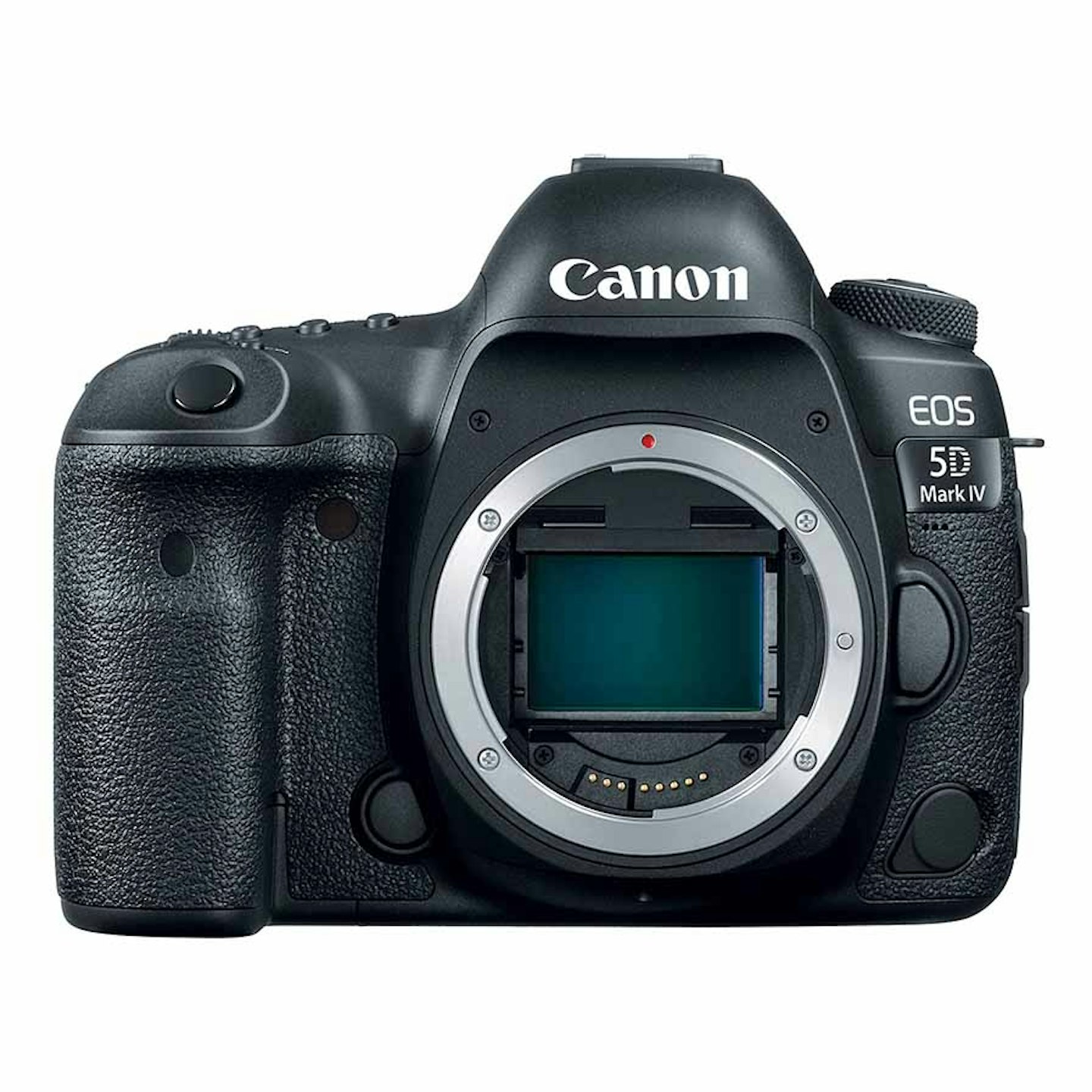
Now we go with the big boys. Canon’s pro-level 5D is in its 4th generation and is a professional workhorse housed in some of the most prestigious bags on the planet. Under the hood is a 30.4MP 35mm full-frame sensor, Dual Pixel AF and a continuous shooting speed of 7fps. It was the first Canon consumer DSLR to feature 4K video and handle DCI 4K at 30fps, or Full HD at 60fps, enough to capture slow motion. There’s a fixed 3.2-inch 162,000-dot LCD, although it doesn’t have touch controls, and an optical viewfinder. You also get 61 phase detection Dual Pixel AF points and an ISO range of 100-32,000 natively, or expandable to 50-102400. In fact, the 5D MkIV is well known for its ability to work in low light, with excellent ISO performance and the ability to acquire focus at -3EV, or candlelight.
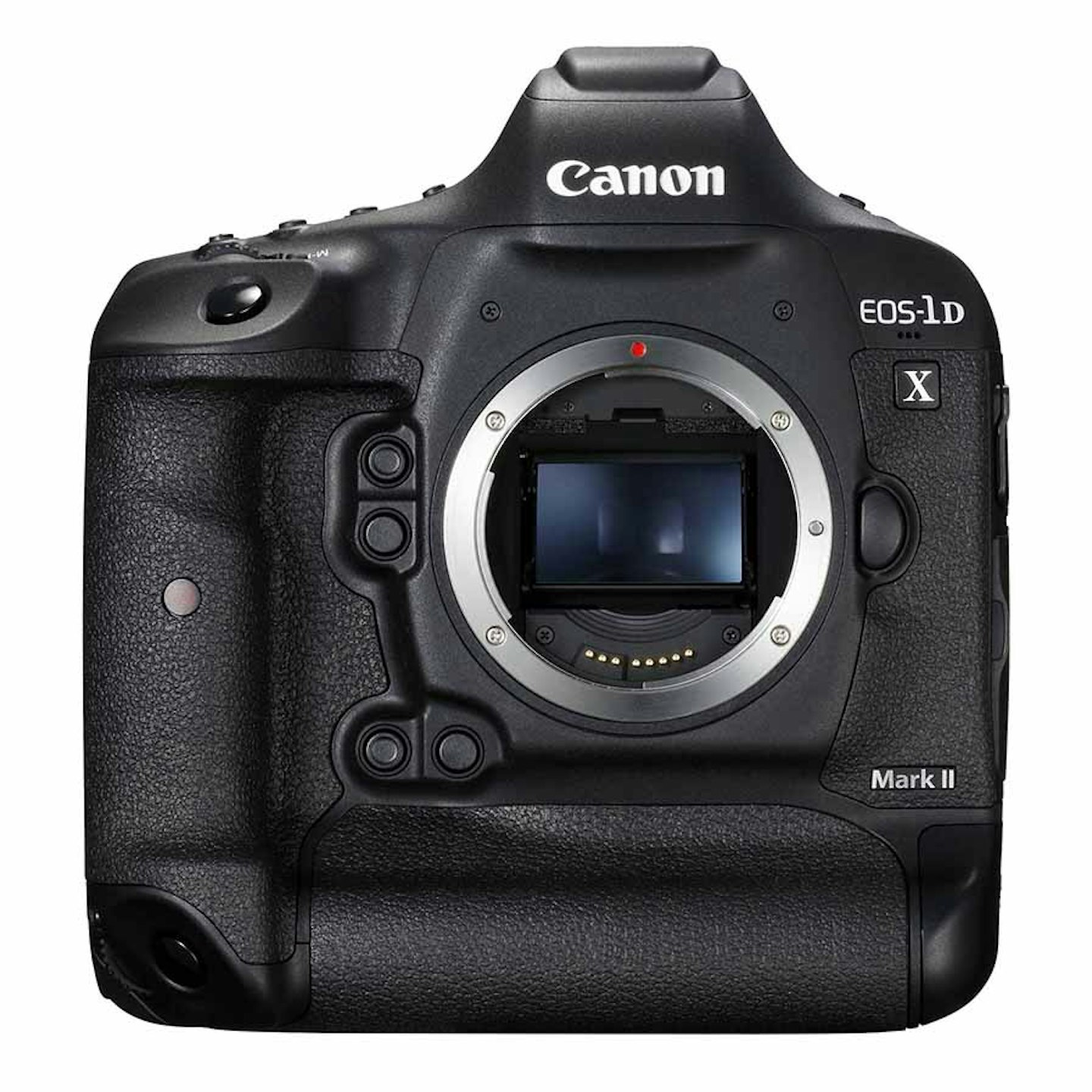
The crème de la crème of Canon’s DSLR line, this beast can be found in sports playgrounds and bridal bags everywhere. In terms of specs, you’ll notice some similarities to the 7D MkII in 2013 on steroids! Featuring Dual Digic 6+ processors, a world-renowned 61-point focus system, with excellent tracking algorithms and a powerful ISO range of 100-51,200, expanded to 50-409,600 in 2013, ideal for dimly lit churches or night sporting events. AF is rated at -3EV, which is enough to cope with stadium-lit floodlights, and you can shoot a very high 14fps with continuous AF, especially when using Canon’s brilliant Dual Pixel AF. You can also shoot 4K video at 30fps or 1080p Full HD at 120fps. You also get a built-in GPS unit – perfect for marking your locations when you’re a professional photographer traveling the world!

